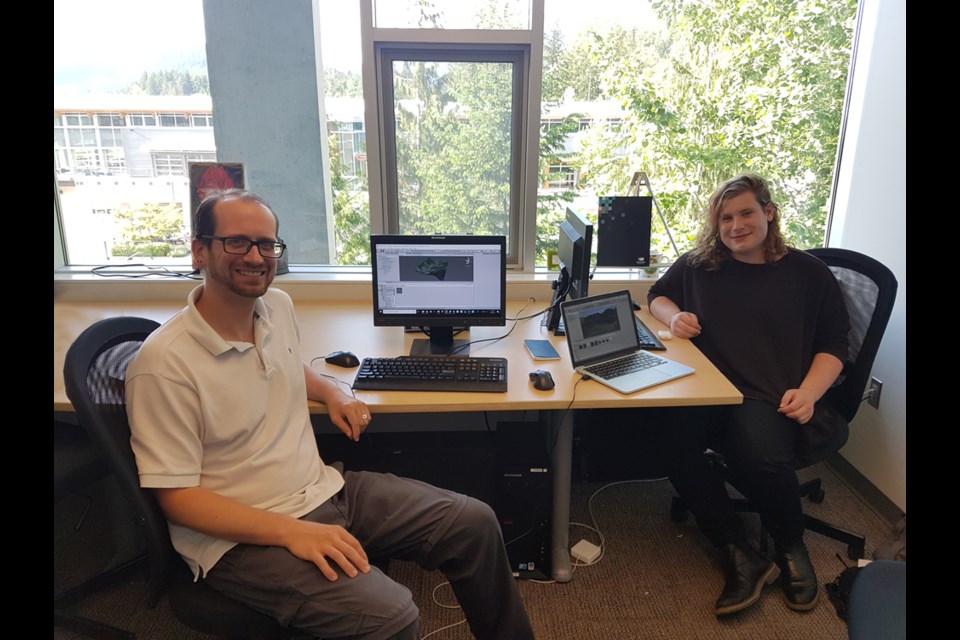It is hard to imagine what the future could look like without a vision.
Visualizing in 3D is part of a research project currently underway in Squamish.
Robert Newell, an instructor and postdoctoral researcher at the School of Environment and Sustainability at Royal Roads University, is working in partnership with the District of Squamish and with Quest University professor Ian Picketts and others at the school on a research project creating an immersive virtual urban planning tool with Squamish as the focus.
“We’re pleased to support this academic exercise undertaken by Mr. Newell, which has no cost to the District, and has the potential to offer us some benefits in terms of using technology and 3D visualization to support future planning. We are looking forward to viewing what Mr. Newell develops,” said the District’s Gary Buxton, general manager of community planning and infrastructure.
Ultimately, the project will allow members of the public and city planners to experience the impact of proposed changes to their community.
"In essence, what this project is about is trying to come up with ways to use planning tools in a way that can allow for more inclusive, participatory planning processes and better community engagement," said Newell, as he walked around Garibaldi Estates with his Quest research assistants on Friday, getting a feel for the area.
The visualization aspect of the project is the last stage of a three-stage process that has been underway since early 2018.
Phase 1 was coming up with what elements Newell wanted to explore and what the relationships were between the elements.
He gathered information from local focus groups and conversations with municipal staff and representatives working in other sectors such as non-governmental organizations, transportation, and the private sector.
This input helped him think about the issues of concern for Squamish as it continues to grow.
"Things like local health, economic viability [and] environmental factors," he said.
Out of conversations with local government also came the idea to explore different scenarios for levels of development density — from low to high.
Phase 2 was coming up with calculations for each of the factors.
In other words, what would a certain development mean for people who live there in terms of exercise, access to social services, access to grocery stores, and the like.
The results of phase two were then taken to a second round of focus groups.
Based on that feedback, the model was refined.
Phase 3 is about creating a realistic visualization that people can virtually walk through and see what different scenarios would look like on the ground.
Sidney Spit Interactive Visualization from Rob Newell on Vimeo.
Previously, Newell created such a model of 1.8 kilometres of Sidney Spit Park.
"There's definitely certain things — more visual elements — that affect people's sense of place and their attachment to place," he said. "It gives people a new perspective of what it actually looks and feels like when these scenarios are implemented on the ground.”
He's also going to create an interactive model explorer that allows people to click different scenarios and go deeper with add-ons such as maps and graphs.
The detailed visual aspect of the Squamish project will focus on about one block in a couple of neighbourhoods.
Squamish was an ideal location for such a research project because it has "beautiful elevation differences" that make cool 3D models, he said.
Squamish is also a good size to model, not too big and not too small. It is also contained, meaning the boundaries don't bleed into other communities, making it easier to model than some other communities.
"If you are dealing with municipal boundaries like Richmond and Vancouver it becomes a little more difficult to figure out what is local and what is regional," he said.
Squamish's development boom also makes it an ideal subject for such a visualization project, he added.
At the end of the year, Newell plans to hold a public open house about his Squamish project.
The research is partially funded by The Social Sciences and Humanities Research Council of Canada.
To learn more, go to www.crcresearch.org/spaces-places-and-possibilities



